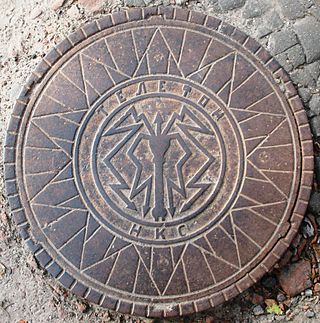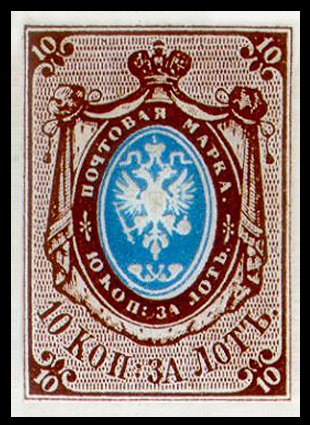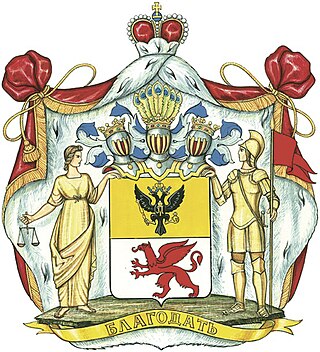This is a survey of the postage stamps and postal history of Transnistria, an unrecognized breakaway territory of Moldova and the de facto independent Pridnestrovian Moldavian Republic.
Soviet Union stamp catalogue is a national catalogue of the RSFSR and USSR postage stamps and miniature sheets, which was being published in the USSR by the “Soyuzpechat” Central Philatelic Agency (CPA) and some other publishers related to the Ministry of Communications. The catalogue usually republished in corpore around once in a 10–15 years. In between republications, additional issues came out every year. These issues contains descriptions of stamps and miniature sheets issued in USSR last year.

The Ministry of Communications of the Union of Soviet Socialist Republics (USSR) (Russian: Министерство связи СССР) was the central state administration body on communications in the Soviet Union from 1923 to 1991. During its existence it had three names: People's Commissariat for Posts and Telegraphs (1923–32), People's Commissariat for Communications (1932–46) and Ministry of Communications (1946–1991). It had authority over the postal, telegraph and telephone communications as well as public radio, technical means of radio and television broadcasting, and the distribution of periodicals in the country.

People's Commissariat for Posts and Telegraphs of the RSFSR, known shortly as the Narkompochtel, was the central organ of government of the RSFSR that was in charge of the organisation and development of the different forms of communication, including postal service. It was founded in Petrograd on 7 November [O.S. 25 October] 1917 from the Russian Ministry of Posts and Telegraphs and retained its organisational structure.

In philately, Leniniana is a topic for collecting postage stamps that tell about the life and story of Vladimir Lenin (1870–1924) or people, places, etc. connected with him. The topic was common in the Soviet Union.

Filateliya (Philately) or formerly Filateliya SSSR is a Russian central philatelic magazine. It first appeared in 1966 as the monthly bulletin Filateliya SSSR and was issued by the USSR Ministry of Communications. The magazine content includes the history and design of postage stamps, and other related themes.

Kollektsioner or formerly Sovetskii Kollektsioner is a Russian central philatelic yearbook. This annual publication started in 1963 and covered the history and design of postage stamps, and other related topics.

Moscow Society of Philatelists and Collectors was one of the first philatelic organisations in Soviet Russia that appeared in Moscow in 1918. Later on, it ceased and was replaced with the All-Russian Society of Philatelists.

Moscow Society of Stamp Collectors was one of the first philatelic organisations in the Russian Empire that was created in Moscow in 1883. Later on, it was dissolved and restored in 1907.

Russian Bureau of Philately was a special organisation under the People's Commissariat for Posts and Telegraphs of the RSFSR in 1921–1924. This was the first Soviet government agency in charge of all matters of the organisation and development of philately.

The A.S. Popov Central Museum of Communications is a museum of science and technology founded in 1872. It is located in the historic centre of Saint Petersburg, Russia, near Saint Isaac's Square.

The People's Commissariat for Communications of the USSR was the central state agency of the Soviet Union for communications in the period 1932 to 1946. The Commissariat administered the postal, telegraph and telephone services.

People's Commissariat for Posts and Telegraphs of the USSR was the central organ of the Soviet Union government that was in charge of the organisation and administration of the different forms of communication including posts. It existed between 1923 and 1932.

The first stamp of the Russian Empire was a postage stamp issued in 1857 and introduced within the territory of the Russian Empire in 1858. It was an imperforate 10-kopeck stamp depicting the coat of arms of Russia, and printed using typography in brown and blue.

The I.I. Schmalhausen Institute of Zoology of National Academy of Sciences of Ukraine is the leading institution in Ukraine doing research in zoology. At present, this is the leading regional center of zoological research and expertise in the Eastern Europe.

The House of Lopukhin was an old Russian noble family, most influential during the Russian Empire, forming one of the branches of the Sorokoumov-Glebov family.
The Komi language, a Uralic language spoken in the north-eastern part of European Russia, has been written in several different alphabets. Currently, Komi writing uses letters from the Cyrillic script. There have been five distinct stages in the history of Komi writing:
Khakass alphabets are the alphabets used to write the Khakas language.
The 226th Zemlyansky Infantry Regiment was an infantry regiment of the Imperial Russian Army. The unit existed from 1914 to 1918. The regiment was famous for defending Osowiec Fortress, having carried out the "Attack of the Dead Men."














